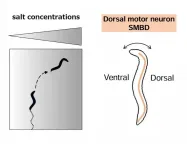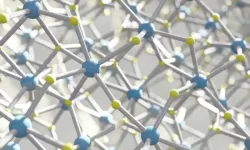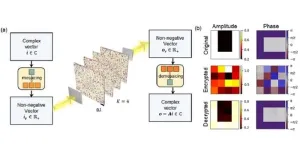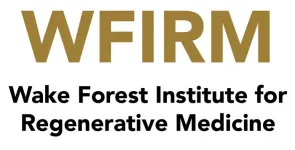(Press-News.org) MIT neuroscientists have found that the brain’s sensitivity to rewarding experiences — a critical factor in motivation and attention — can be shaped by socioeconomic conditions.
In a study of 12 to 14-year-olds whose socioeconomic status (SES) varied widely, the researchers found that children from lower SES backgrounds showed less sensitivity to reward than those from more affluent backgrounds.
Using functional magnetic resonance imaging (fMRI), the research team measured brain activity as the children played a guessing game in which they earned extra money for each correct guess. When participants from higher SES backgrounds guessed correctly, a part of the brain called the striatum, which is linked to reward, lit up much more than in children from lower SES backgrounds.
The brain imaging results also coincided with behavioral differences in how participants from lower and higher SES backgrounds responded to correct guesses. The findings suggest that lower SES circumstances may prompt the brain to adapt to the environment by dampening its response to rewards, which are often scarcer in low SES environments.
“If you’re in a highly resourced environment, with many rewards available, your brain gets tuned in a certain way. If you’re in an environment in which rewards are more scarce, then your brain accommodates the environment in which you live. Instead of being overresponsive to rewards, it seems like these brains, on average, are less responsive, because probably their environment has been less consistent in the availability of rewards,” says John Gabrieli, the Grover Hermann Professor of Health Sciences and Technology, a professor of brain and cognitive sciences, and a member of MIT’s McGovern Institute for Brain Research.
Gabrieli and Rachel Romeo, a former MIT postdoc who is now an assistant professor in the Department of Human Development and Quantitative Methodology at the University of Maryland, are the senior authors of the study. MIT postdoc Alexandra Decker is the lead author of the paper, which appears today in the Journal of Neuroscience.
Reward response
Previous research has shown that children from lower SES backgrounds tend to perform worse on tests of attention and memory, and they are more likely to experience depression and anxiety. However, until now, few studies have looked at the possible association between SES and reward sensitivity.
In the new study, the researchers focused on a part of the brain called the striatum, which plays a significant role in reward response and decision-making. Studies in people and animal models have shown that this region becomes highly active during rewarding experiences.
To investigate potential links between reward sensitivity, the striatum, and socioeconomic status, the researchers recruited more than 100 adolescents from a range of SES backgrounds, as measured by household income and how much education their parents received.
Each of the participants underwent fMRI scanning while they played a guessing game. The participants were shown a series of numbers between 1 and 9, and before each trial, they were asked to guess whether the next number would be greater than or less than 5. They were told that for each correct guess, they would earn an extra dollar, and for each incorrect guess, they would lose 50 cents.
Unbeknownst to the participants, the game was set up to control whether the guess would be correct or incorrect. This allowed the researchers to ensure that each participant had a similar experience, which included periods of abundant rewards or few rewards. In the end, everyone ended up winning the same amount of money (in addition to a stipend that each participant received for participating in the study).
Previous work has shown that the brain appears to track the rate of rewards available. When rewards are abundant, people or animals tend to respond more quickly because they don’t want to miss out on the many available rewards. The researchers saw that in this study as well: When participants were in a period when most of their responses were correct, they tended to respond more quickly.
“If your brain is telling you there’s a really high chance that you’re going to receive a reward in this environment, it's going to motivate you to collect rewards, because if you don’t act, you’re missing out on a lot of rewards,” Decker says.
Brain scans showed that the degree of activation in the striatum appeared to track fluctuations in the rate of rewards across time, which the researchers think could act as a motivational signal that there are many rewards to collect. The striatum lit up more during periods in which rewards were abundant and less during periods in which rewards were scarce. However, this effect was less pronounced in the children from lower SES backgrounds, suggesting their brains were less attuned to fluctuations in the rate of reward over time.
The researchers also found that during periods of scarce rewards, participants tended to take longer to respond after a correct guess, another phenomenon that has been shown before. It’s unknown exactly why this happens, but two possible explanations are that people are savoring their reward or that they are pausing to update the reward rate. However, once again, this effect was less pronounced in the children from lower SES backgrounds — that is, they did not pause as long after a correct guess during the scarce-reward periods.
“There was a reduced response to reward, which is really striking. It may be that if you’re from a lower SES environment, you’re not as hopeful that the next response will gain similar benefits, because you may have a less reliable environment for earning rewards,” Gabrieli says. “It just points out the power of the environment. In these adolescents, it’s shaping their psychological and brain response to reward opportunity.”
Environmental effects
The fMRI scans performed during the study also revealed that children from lower SES backgrounds showed less activation in the striatum when they guessed correctly, suggesting that their brains have a dampened response to reward.
The researchers hypothesize that these differences in reward sensitivity may have evolved over time, in response to the children’s environments.
“Socioeconomic status is associated with the degree to which you experience rewards over the course of your lifetime,” Decker says. “So, it’s possible that receiving a lot of rewards perhaps reinforces behaviors that make you receive more rewards, and somehow this tunes the brain to be more responsive to rewards. Whereas if you are in an environment where you receive fewer rewards, your brain might become, over time, less attuned to them.”
The study also points out the value of recruiting study subjects from a range of SES backgrounds, which takes more effort but yields important results, the researchers say.
“Historically, many studies have involved the easiest people to recruit, who tend to be people who come from advantaged environments. If we don’t make efforts to recruit diverse pools of participants, we almost always end up with children and adults who come from high-income, high-education environments,” Gabrieli says. “Until recently, we did not realize that principles of brain development vary in relation to the environment in which one grows up, and there was very little evidence about the influence of SES.”
###
The research was funded by the William and Flora Hewlett Foundation and a Natural Sciences and Engineering Research Council of Canada Postdoctoral Fellowship.
END
How the brain responds to reward is linked to socioeconomic background
An MIT study finds the brains of children who grow up in less affluent households are less responsive to rewarding experiences
2024-01-22
ELSE PRESS RELEASES FROM THIS DATE:
New reagent improves the process of making sulfur-containing compounds that may be used in medicines
2024-01-22
During the past decade, there has been significant development of new sulfur containing compounds that are used in various industries, including pharmaceuticals and agricultural products. Sulfoximines, sulfonimidoyl fluorides and sulfonimidamides are types of sulfur-containing chemical compounds that have wide-ranging potential as therapeutic drugs. However, the synthesis process for these compounds is complex and has several limitations. In a new article published in Nature Chemistry, Moffitt Cancer Center researchers describe their ...
New candidate for universal memory is fast, low-power, stable and long-lasting
2024-01-22
We are tasking our computers with processing ever-increasing amounts of data to speed up drug discovery, improve weather and climate predictions, train artificial intelligence, and much more. To keep up with this demand, we need faster, more energy-efficient computer memory than ever before.
Researchers at Stanford have demonstrated that a new material may make phase-change memory—which relies on switching between high and low resistance states to create the ones and zeroes of computer data—an improved option for future AI and data-centric systems. ...
Follow the salt: connecting salt concentrations and motion in roundworms
2024-01-22
Joint research led by Ayaka Matsumoto and Yuichi Iino of the University of Tokyo demonstrated that temporal decrease in salt concentration leads to the activation of the neck motor neuron of roundworms only in a specific phase of its activity. The activation adjusts the roundworm's trajectory toward higher salt concentrations. The finding pinpoints the neural mechanism by which roundworms integrate sensory and motor information, a first step toward understanding the neural mechanisms of navigation in more complex animals. The findings were published in the journal Proceedings ...
Planetary Commons: Fostering global cooperation to safeguard critical Earth system functions
2024-01-22
“Stability and wealth of nations and our civilisation depends on the stability of critical Earth system functions that operate beyond national borders. At the same time, human activities push harder and harder on the planetary boundaries of these pivotal systems. From the Amazon rainforest to the Greenland ice masses, there are rising risks of triggering irreversible and unmanageable shifts in Earth system functioning. As these shifts affect people across the globe, we argue that tipping elements should be ...
Manipulated hafnia paves the way for next-gen memory devices
2024-01-22
EMBARGOED: NOT FOR RELEASE UNTIL 3:00 P.M. U.S. EASTERN TIME ON JANUARY 22, 2024
Scientists and engineers have been pushing for the past decade to leverage an elusive ferroelectric material called hafnium oxide, or hafnia, to usher in the next generation of computing memory. A team of researchers including the University of Rochester’s Sobhit Singh published a Proceedings of the National Academy of Sciences study outlining progress toward making bulk ferroelectric and antiferroelectric hafnia available for use in a variety of applications.
In a specific crystal phase, hafnia exhibits ferroelectric properties—that is, electric polarization that can be changed in one direction ...
Optical computing boost with diffractive network advance
2024-01-22
State-of-the-art neural networks heavily rely on linear operations, such as matrix-vector multiplications and convolutions. While dedicated processors like GPUs and TPUs exist for these operations, they have limitations in terms of power consumption and bandwidth. Optics is better suited for such operations because of its inherent parallelism, large bandwidth, and computation speed.
Diffractive deep neural networks (D2NN), also known as diffractive networks, constitute an emerging optical computing architecture. ...
Wake Forest Institute for Regenerative Medicine (WFIRM) to lead $40 Million initiative for AFIRM Consortium
2024-01-22
Winston Salem, NC – January 22, 2024 - The Wake Forest Institute for Regenerative Medicine, part of Wake Forest University School of Medicine, has been selected to lead the Armed Forces Institute of Regenerative Medicine (AFIRM) Consortium. The project - a $40 million, five year-long award from the Defense Health Agency (DHA) - will focus on taking regenerative medicine solutions for battlefield injuries to the next level, and ultimately to the general public.
Regenerative medicine is a science that takes advantage of the body's natural abilities to restore or replace damaged tissue and organs. WFIRM has managed two prior AFIRM consortia since ...
Argonne National Laboratory flexes capabilities with receipt of four nuclear innovation vouchers
2024-01-22
A decade that began with a global shutdown is a third of the way done. Its finale — a major deadline for reducing U.S. carbon emissions to slow climate change — approaches at the usual clip. With the decade’s halfway mark in view, the U.S. Department of Energy (DOE) Gateway for Accelerated Innovation in Nuclear (GAIN) awarded seven new vouchers to companies and national laboratories working to develop and commercialize clean nuclear energy projects. Nuclear energy is considered central to efforts to minimize carbon emissions and still reliably meet rising ...
Strategy to boost prostate cancer treatment efficacy devised at Rutgers Health
2024-01-22
Rutgers researchers can predict which patients will benefit from a popular prostate cancer drug – and have devised a strategy that may make the treatment work longer.
“This work should help doctors know which patients’ prostate cancers will and won’t respond to the androgen deprivation therapy enzalutamide, which can slow prostate cancer growth by disrupting androgen receptor signaling,” said Antonina Mitrofanova, associate professor of Biomedical and Health Informatics, associate dean for research at the Rutgers School of Health Professions, researcher at Rutgers Cancer ...
Salad in space? New study says it's not a healthy choice
2024-01-22
Lettuce and other leafy green vegetables are part of a healthy, balanced diet — even for astronauts on a mission.
It’s been more than three years since the National Aeronautics and Space Administration made space-grown lettuce an item on the menu for astronauts aboard the International Space Station. Alongside their space diet staples of flour tortillas and powdered coffee, astronauts can munch on a salad, grown from control chambers aboard the ISS that account for the ideal temperature, amount of water and light ...
LAST 30 PRESS RELEASES:
Stardust study resets how life’s atoms spread through space
Practical education: Clinical scenario-based program development
The impact of family dynamics on eating behaviour – how going home for Christmas can change how you eat
Tracing the quick synthesis of an industrially important catalyst
New software sheds light on cancer’s hidden genetic networks
UT Health San Antonio awarded $3 million in CPRIT grants to bolster cancer research and prevention efforts in South Texas
Third symposium spotlights global challenge of new contaminants in China’s fight against pollution
From straw to soil harmony: International team reveals how biochar supercharges carbon-smart farming
Myeloma: How AI is redrawing the map of cancer care
Manhattan E. Charurat, Ph.D., MHS invested as the Homer and Martha Gudelsky Distinguished Professor in Medicine at the University of Maryland School of Medicine
Insilico Medicine’s Pharma.AI Q4 Winter Launch Recap: Revolutionizing drug discovery with cutting-edge AI innovations, accelerating the path to pharmaceutical superintelligence
Nanoplastics have diet-dependent impacts on digestive system health
Brain neuron death occurs throughout life and increases with age, a natural human protein drug may halt neuron death in Alzheimer’s disease
SPIE and CLP announce the recipients of the 2025 Advanced Photonics Young Innovator Award
Lessons from the Caldor Fire’s Christmas Valley ‘Miracle’
Ant societies rose by trading individual protection for collective power
Research reveals how ancient viral DNA shapes early embryonic development
A molecular gatekeeper that controls protein synthesis
New ‘cloaking device’ concept to shield sensitive tech from magnetic fields
Researchers show impact of mountain building and climate change on alpine biodiversity
Study models the transition from Neanderthals to modern humans in Europe
University of Phoenix College of Doctoral Studies releases white paper on AI-driven skilling to reduce burnout and restore worker autonomy
AIs fail at the game of visual “telephone”
The levers for a sustainable food system
Potential changes in US homelessness by ending federal support for housing first programs
Vulnerability of large language models to prompt injection when providing medical advice
Researchers develop new system for high-energy-density, long-life, multi-electron transfer bromine-based flow batteries
Ending federal support for housing first programs could increase U.S. homelessness by 5% in one year, new JAMA study finds
New research uncovers molecular ‘safety switch’ shielding cancers from immune attack
Bacteria resisting viral infection can still sink carbon to ocean floor
[Press-News.org] How the brain responds to reward is linked to socioeconomic backgroundAn MIT study finds the brains of children who grow up in less affluent households are less responsive to rewarding experiences




